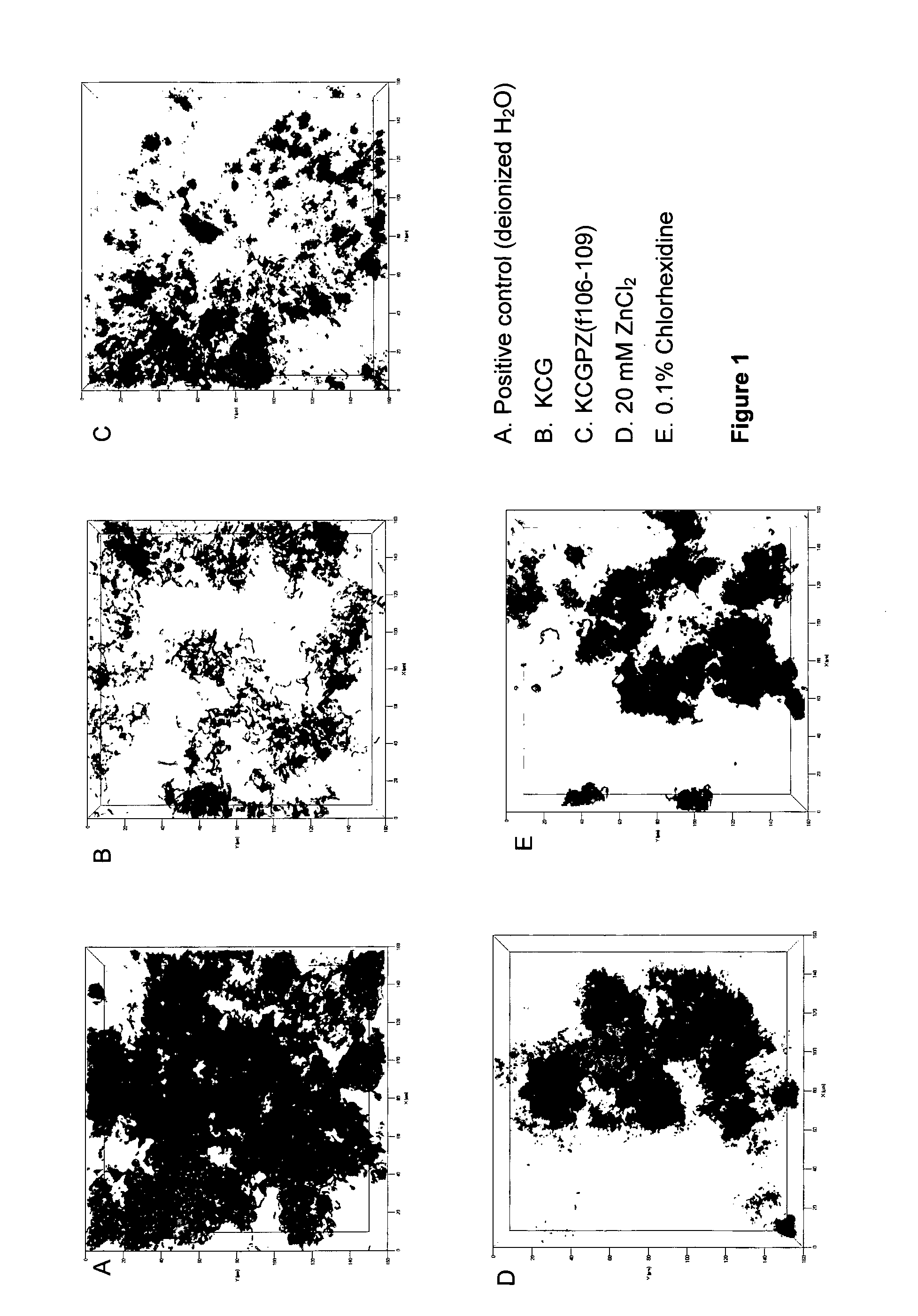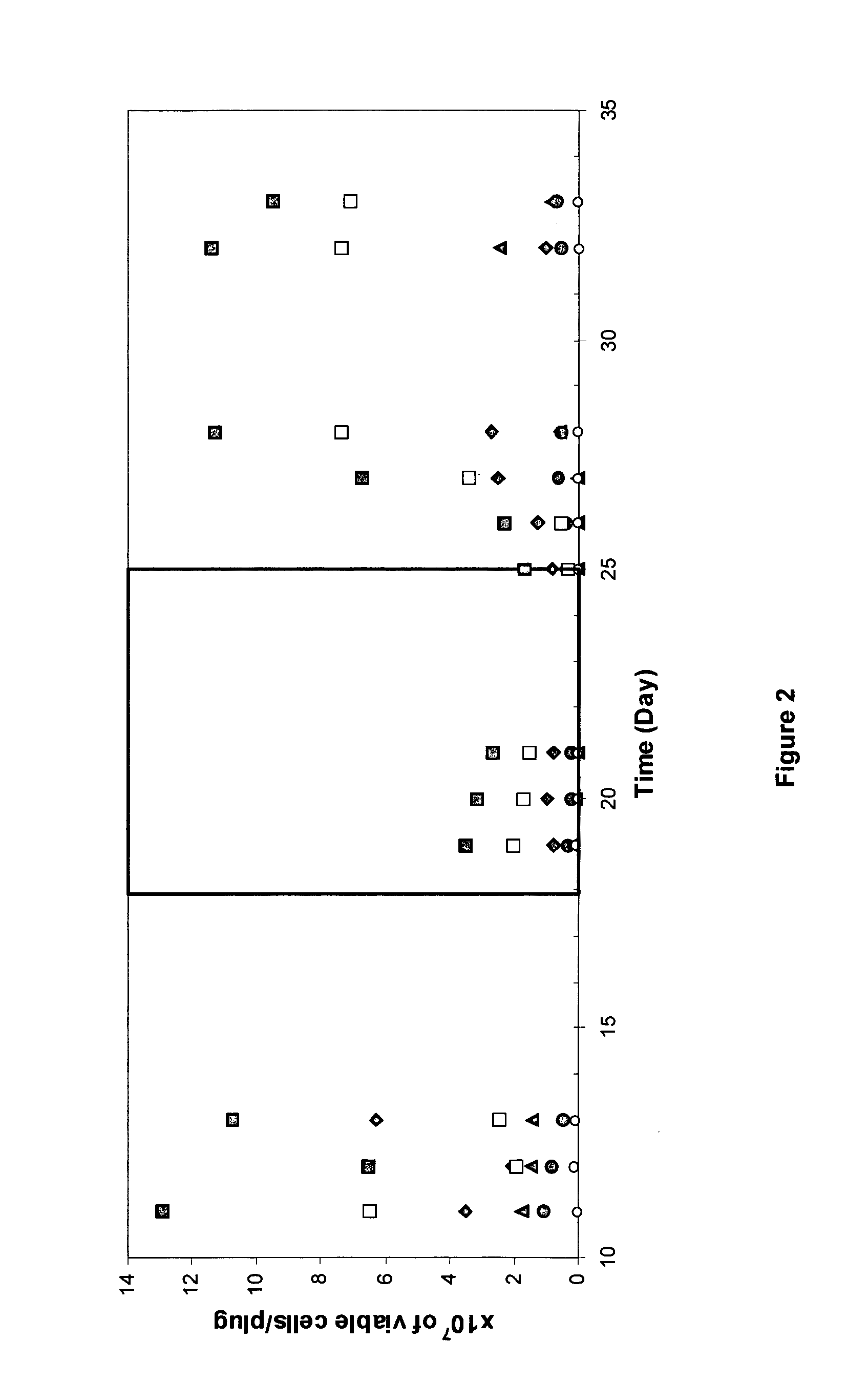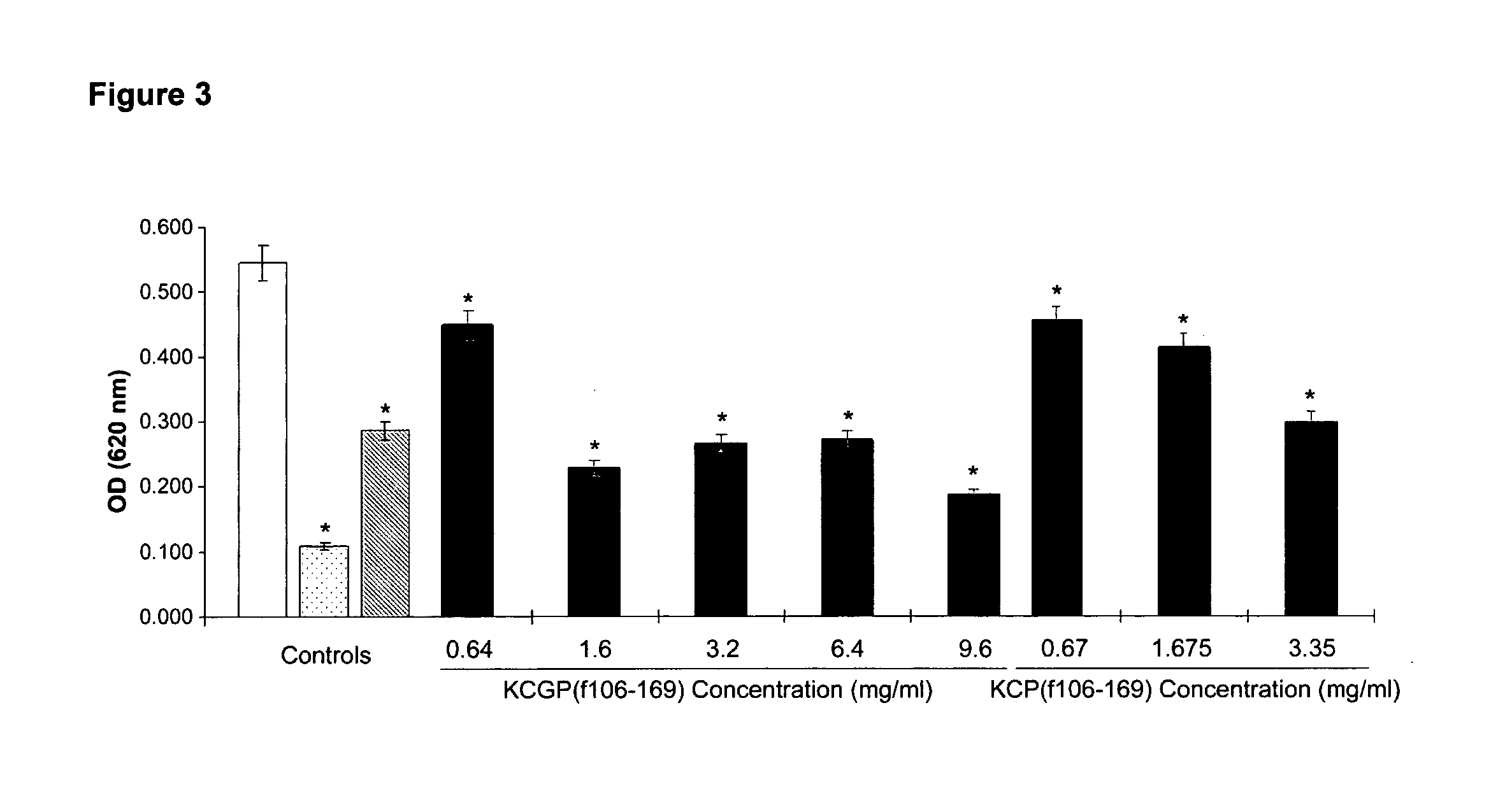Antibiofilm glycopeptides
- Summary
- Abstract
- Description
- Claims
- Application Information
AI Technical Summary
Benefits of technology
Problems solved by technology
Method used
Image
Examples
example 1
[0155]KCGP(f106-169) and KCGPZ(f106-169) Preparation Casein-HCl was dissolved in deionized water at 50° C. to a final concentration of 21.5 g / L, the pH was maintained at 8.0 by the addition of 1 M NaOH. The temperature was then lowered to 37° C. and the pH adjusted to 6.3 by addition of 1 M HCl to avoid precipitation of casein. To hydrolyze the casein, Rennet (90% chymosin; EC 3.4.23.4; 145 international Milk clotting units [IMCU] / mL; single strength; Chr. Hanson) was added to a final concentration of 1.2 IMCU / g casein and the solution was stirred at 37° C. for 1 h. Hydrolysis was stopped by the addition of trichloroacetic acid to a final concentration of 4%, and the precipitated proteins were pelleted by centrifugation (5,000 g, 15 min, 4° C.). The supernatant containing κ-casein(106-169) caseinomacropeptide (CMP) was concentrated and washed with H2O using diafiltration with a 3,000-Da cutoff membrane (S10Y3, Amicon / Millipore) to produce KCGP(f106-169). The retentate was analyzed b...
example 2
[0158]Flowcell culture and CSLM analysis of monospecific biofilm The biofilm culture of S. mutans in flow cells was similar to that described by Wen et al. (2006) with several modifications. A 3-channel flow cell system (Stovall Life Science, Greensboro, N.C., USA) was modified with stopcocks for inoculation, testing and staining of the bacterial biofilms. All parts were assembled and 0.5% sodium hypochlorite was pumped in and left overnight. Sterile water (200 mL) was then used to flush the system prior to the addition of growth medium. The system was inoculated with 1 mL of an exponentially growing S. mutans Ingbritt culture diluted to a cell density of 1×107 cells / mL. The system was incubated for 1 h prior to constant flow (0.2 mL / min) of 25% ASM (ASM; 2.5 g / L type II porcine gastric mucin, 2.0 g / L bacteriological peptone, 2.0 g / L tryptone, 1.0 g / L yeast extract, 0.35 g / L NaCl, 0.2 g / L KCl, 0.2 g / L CaCl2 and 1 mg / L haemin, pH 7.0) supplemented with 2.5 mM DTT and 0.5 g / L sucrose....
example 3
[0165]Multispecies oral biofilms culture. KCGPZ(f106-169) was then tested against a polymicrobial biofilm consisting of six bacterial species which were chosen to represent the major species of supragingival dental plaque, including the opportunistic pathogens that are commonly associated with dental caries initiation and progression. The biofilm bacterial growth media (ASM) was designed to mimic the glycoprotein-rich composition of saliva and a carbohydrate and protein mixture was pulsed into the CDFF four times per day to mimic dietary intake.
[0166]To model supragingival plaque six oral bacterial species were Streptococcus sanguis (NCTC 7863), Streptococcus mutans Ingbritt, Actinomyces naeslundii (NCTC 10301), Veillonella dispar (ATCC 17745), Lactobacillus casei (NCDO 161) and Fusobacterium nucleatum (ATCC 10953) and were cultured as a polymicrobial biofilm in a constant-depth film fermentor (CDFF; Cardiff University, Cardiff, United Kingdom; (Dashper et al. 2005; Shu et al., 2003...
PUM
| Property | Measurement | Unit |
|---|---|---|
| Fraction | aaaaa | aaaaa |
| Volume | aaaaa | aaaaa |
| Volume | aaaaa | aaaaa |
Abstract
Description
Claims
Application Information
 Login to View More
Login to View More - R&D
- Intellectual Property
- Life Sciences
- Materials
- Tech Scout
- Unparalleled Data Quality
- Higher Quality Content
- 60% Fewer Hallucinations
Browse by: Latest US Patents, China's latest patents, Technical Efficacy Thesaurus, Application Domain, Technology Topic, Popular Technical Reports.
© 2025 PatSnap. All rights reserved.Legal|Privacy policy|Modern Slavery Act Transparency Statement|Sitemap|About US| Contact US: help@patsnap.com



